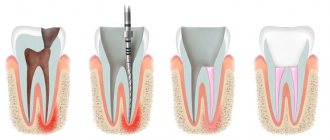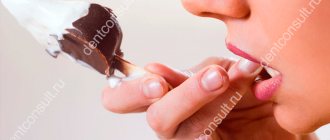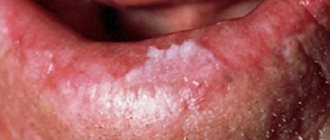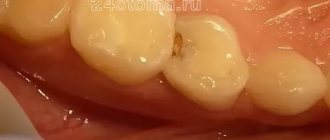Reasons for changing the shade of enamel
Conventionally, the reasons that teeth become yellow or dark can be divided into two main groups: external influences (food dyes, smoking, poor hygiene) and internal influences (health conditions, removal of the dental nerve, etc.). Let's look at them in more detail.
Nutritional Features
Quite often, the enamel turns yellow or darkens due to regular exposure to drinks and products that contain coloring pigments - coffee, tea, seasonings, chocolate, beets, etc. Coloring substances accumulate in the micropores of tooth enamel and dentin, which leads to a change in shade teeth.
Environmental factors
Tooth enamel can change its shade as a result of extremely poor ecology, when a person works in hazardous industries and consumes bad water, in particular, with a high fluoride content (white spots appear). Darker shades can form when the body is exposed to lead, bromine, mercury and other hazardous substances.
Hygiene factors
Poor oral hygiene leads to discoloration of teeth due to plaque formation. It occurs due to irregular, poor-quality cleaning or due to incorrectly selected products. As a result, the enamel becomes darker due to the accumulation of large amounts of deposits.
Age-related changes
Over the years, tooth enamel becomes thinner, through which darker dentin begins to show through. It is for this reason that yellow teeth appear in most people in old age.
Various diseases and their treatment
Another common cause of darkening of the enamel is diseases of the internal organs, as well as their treatment with certain drugs. The use of certain types of antibiotics, for example, tetracycline, leads to the appearance of dark stripes on the enamel (especially if it was taken during the formation of the child’s teeth during intrauterine development or their growth in the first years of life). With fluorosis, white spots may appear on the enamel, which over time become yellow-brown.
On a note! In the absence of the dental nerve (pulp), the tooth darkens over time - this is a completely normal and physiological process. Unfortunately, whitening is usually not effective in this situation, so it is worth considering the installation of veneers or lumineers.
If the tooth becomes red, this indicates damage or inflammation of the dental nerve, which requires surgical treatment by a dentist.
Bad habits
Smoking causes permanent plaque to form on the surface of the teeth, causing them to turn yellow. If you can’t give up the habit, you should strengthen your oral hygiene, as well as regularly carry out comprehensive professional hygiene at the dentist - every 3-5 months to better cleanse your teeth of plaque.
Uneven teeth. The teeth seem to overlap each other.
Solution: You can correct the situation by installing braces. It is possible to use plastic, metal, ceramic or sapphire systems. sapphire braces are most widespread . Due to their light transmission, they are barely noticeable on the teeth. By installing so-called “smart braces”, you can avoid many problems, since they themselves correct the position of the teeth in the right directions. Braces are installed on patients of all ages, including mature people. Treatment with braces before prosthetics is very effective, as it allows you to achieve better results than without the use of braces. There are modern systems of invisible braces that are glued to the inner (invisible) side of the teeth; incognito braces . Before installing braces, the oral cavity must be sanitized. The duration of wearing braces is from six months to two years; in severe cases, treatment may last longer. While wearing them, regular visits to an orthodontist and a hygienist are required for professional oral hygiene.
Dental abnormalities that may cause discoloration of tooth enamel
Changes in tooth color can occur as a result of changes in their size or shape. The color of the tooth may change depending on the number of teeth and the period of eruption.
Complete edentia is extremely rare, but the absence of several teeth is a common pathology. It is explained by endocrine disorders, which can cause a delay in teething and, as a result, a change in color.
With tuberculosis, neurological diseases, rickets, retention of the molars, as well as the upper canines (permanent), occurs.
In diseases associated with osteogenesis, patients most often have small teeth and a bluish tint to the tooth enamel. It is worth noting that the teeth of people with such diseases wear out quickly and are especially susceptible to disease. Pathologies in the development of dental dentin and tooth enamel cause amber, opal, bluish and brown tints of teeth and insufficient size.
Exogenous (external) factors
In the vast majority of cases, enamel changes its color under the influence of exogenous factors that you can neutralize. This occurs at different periods of life and depends on the individual characteristics of the structure of the teeth. The enamel itself has a bluish or pinkish tint, and the visual perception of tooth color usually depends on the underlying dentin, which can be yellow or brown. In fact, it is dentin that determines the natural shades of human teeth, as well as the thickness, density, transparency and degree of mineralization of the enamel. The reasons for enamel staining are conventionally classified as external and internal. With external staining, chromogens (pigments) are introduced into the tooth on their own; with internal staining, they form inside the dentin. The second case is caused by systemic pathological processes in the body. Sometimes internal staining can result from endodontic diseases, when chromogens penetrate into the internal structures of the tooth through its defects. Among the external (exogenous) causes of enamel staining, it is worth highlighting:
- Consumption of certain drinks and foods. These usually include coffee and tea, and black tea has a stronger effect on the shade of teeth, contrary to popular misconceptions. In contrast, coffee does not contain a high concentration of tannins, which affect the whiteness of teeth. This category also includes wines and concentrated berry juices, although they are drunk less often in our country than traditional hot drinks.
- Smoking. The fact that smoking cigarettes, cigars, cigarettes and pipes negatively affects the color of teeth has been clinically proven. Smokers' teeth almost always turn yellow - it's just a matter of time and experience. Over the course of life, the enamel of a smoker may even acquire a brown or black tint.
- The use of topical antiseptics like chlorhexidine for rinsing can also negatively affect the shade of the enamel. Sometimes this occurs while taking medications with metal salts (for example, silver). In this case, the teeth may even become bluish.
- Mechanical injuries. An injured tooth almost always becomes stained over time, since it is very easy for chromogens to penetrate into the internal structures through chips and cracks. This also applies to advanced caries or pulpitis, but not in all cases.
- Poor oral hygiene. The plaque itself has a yellowish tint, and if it thickens, the smile takes on a corresponding appearance. Not to mention the fact that poor hygiene is a common trigger for the development of various pathologies of teeth and soft tissues of the oral cavity.
Surface stains are the easiest to bleach, both at home and professionally. At Dr. Granov’s dental clinic, we are ready to offer you innovative and safest whitening methods , including the most popular “ZOOM3”. We recommend that all our patients regularly seek professional dental cleaning . The procedure takes place on an outpatient basis and is performed using an ultrasonic device that removes dense plaque and tartar. Next, the enamel is polished using an abrasive paste. The final manipulation is polishing the enamel with a special solution, which helps protect teeth from destruction and unwanted pigmentation. If you want to keep your teeth white, you need to have a professional cleaning at least once a year, preferably twice. During the cleaning process, carious lesions are sometimes discovered in the early stages, which can be treated with a non-invasive remineralization method.
How to care for your teeth after whitening
After you make your smile snow-white, you will need to observe oral hygiene more carefully, of course, if you want the result to last for a long time.
During the first 48 hours, you must avoid foods that stain the enamel. Eliminate the following foods:
- Chocolate;
- Coffee;
- Tea;
- Juices, fruit drinks, red wine;
- Lemonades and sodas;
- Confectionery products containing dyes;
- Beets and carrots;
- Adjika, ketchup, soy sauce, etc.
In addition, it is very advisable to refrain from smoking for two days. As a last resort, use an electronic cigarette. Next, for two weeks you need to reduce the number of cigarettes you smoke as much as possible.
Daily hygiene plays an important role in maintaining white teeth. Brush your teeth at least twice a day, and preferably after every major meal. Be sure to use dental floss to prevent food debris from accumulating in areas that are difficult to reach with a brush. The use of rinses is also recommended; this will more effectively combat the growth of harmful bacteria, soothe the gums and help maintain whiteness.
For cleaning, it is best to use whitening and remineralizing pastes.
For example, the professional toothpaste “ASEPTA PLUS” Gentle Whitening is designed for effective and safe teeth whitening without restrictions on the period of use.
The product guarantees enamel lightening by 1.5 tones within 4 weeks of use, as well as a significant (3.4 times) increase in anti-caries effectiveness.
How accessible and durable is the Hollywood smile?
Prices for Cerinate lumineers average around a thousand dollars per tooth. For this money you get white, strong, protected teeth, the service life of which is more than 20 years! It is important not to come across a fake; there are a lot of offers on the market from ultra-thin veneers to nanoeers, all of them claim to be “Hollywood” teeth. The only brand that has been on the market and has been developing lumineers for over 40 years is Cerinate. Only certified doctors have the right to purchase and install lumineers, and their patients are entitled to additional guarantees from Cerinate.
Having received a dazzling smile, do not forget that now the teeth are half artificial and they, as if they were real ones, require daily care and careful treatment - without biting off hard foods, cracking seeds or even nuts. Treat your teeth with care and they will serve you for the rest of your life, and your reflection in the mirror will delight you and cause only a dazzling, even and sincere Hollywood smile!
Single crooked or protruding tooth
Solution: As a rule, if a person notices only one crooked tooth in himself, and believes that the whole problem is only in him, then, most likely, he is mistaken. The ugliest tooth always catches your eye, and as soon as it is corrected, another one begins to irritate you. Unfortunately, there is an opinion that braces or aligners are needed for extensive pathology. The protruding tooth must be fitted into the dentition, but there is not always room for it. There are correction methods using a filling or veneer, but they have many disadvantages and cannot always return the patient to the desired functionality of the tooth. In most cases, the upper canines are protruding, since they erupt later and there is not always enough space for them, therefore, orthodontic treatment is the standard in correcting crooked and protruding teeth.
First, oral health, and then the beauty of teeth!
Agree that snow-white teeth do not go hand in hand with caries, inflamed gums and bad breath. A wide, “dazzling” smile will not be enhanced by the absence of some teeth and pronounced orthodontic problems.
In general, first a healthy (sanitized) oral cavity, and only then whitening - as the final touch to a flawless smile!
Despite the fact that teeth whitening is a cosmetic procedure and is done solely at will, it has contraindications.
Relative contraindications include :
- Caries, pulpitis, periodontitis
- Chips, microcracks of enamel and wedge-shaped defects (exposed necks of teeth)
- Increased tooth sensitivity
- Inflammatory processes on the oral mucosa and gums
Without knowing the true condition of the oral cavity and starting whitening, you risk experiencing acute pain and damaging your teeth and gums.
Absolute contraindications may differ for different whitening systems, so we will provide information on Philips ZOOM professional in-office whitening:
- Pregnancy and lactation
- Age up to 14 years
- Increased sensitivity to ultraviolet radiation and taking medications that cause tissue sensitivity to the effects of a light source (with this contraindication, chemical, lamp-free teeth whitening is possible)
It is recommended that you visit your dentist before any whitening procedure.
What else you need to know before whitening
1) Whitening only changes the color of natural teeth . Fillings, inlays, veneers and crowns cannot be bleached. If such restorations are located in the smile area and after whitening they differ in color from “your” teeth, ask your dentist to replace them.
For the same reason , teeth treated before whitening are closed with temporary fillings in order to later replace them with permanent ones (with the selection of the appropriate color).
Replacement of restorations is carried out no earlier than 14 days after completion of whitening (this is the average time it takes for the formation of a new teeth color).
2) Depulped (dead) teeth that have darkened after nerve removal can be whitened only by intracoronal bleaching . This procedure must be performed before teeth whitening.
3) It is impossible to accurately predict and order a specific color . The result of whitening is individual for each person and depends on many factors.
For example: gray-brown teeth whiten worse than white and yellow teeth. “Fangs” bleach worse than “incisors.”
Teeth may whiten unevenly (the necks of the teeth remain darker), but after some time the color of the teeth evens out. If this does not happen, you can lighten the unsatisfactory color with additional bleaching procedures.
The only option to ensure the desired color that is the same for all teeth is to install ceramic veneers on the teeth “in the smile zone.”
How is the procedure done?
We use only safe enamel lightening techniques. All systems presented in the clinic are based on the mild, effective effects of special gels. They contain hydrogen peroxide of varying concentrations, which penetrates the tooth tissue and neutralizes pigment. Whatever system you choose, you should not be afraid of harm to your health and enamel. The only possible consequence of some systems is a short-term increase in sensitivity.
Teeth whitening begins with a consultation. The doctor examines the oral cavity, assesses the condition of the teeth and enamel, notes the presence of fillings and crowns in the smile area - this is the area that is used during whitening. Chewing teeth and enamel on the inside do not whiten.
Important: if you have caries or gum inflammation, as well as other problems in the oral cavity, this is where you should start. Any whitening procedure can only be performed on healthy teeth.
If during the consultation the doctor identifies contraindications (we’ll talk about them later), then you will be offered alternative ways to whiten your teeth at home. For such independent procedures, special products are produced, the concentration of substances in which is significantly lower than in the products for the procedure in the clinic. This should be understood so as not to expect instant results from pencils, trays or strips.
If the oral cavity is healthy and there are no contraindications, the doctor will offer several systems to choose from and tell you how they work. Our clinic offers technologies that require exposure to lamp light, as well as those that work without lamps.
How to restore the color of tooth enamel?
In many cases, with the exception of diseases and pathologies, patients have every chance to influence and change the color of tooth enamel for the better, without even going to the dentist. The surest way is to eliminate all foods and drinks that contain food colorings.
In difficult cases, various modern technologies, professional teeth cleanings help restore whiteness, and in the most difficult cases, prosthetics are performed.
There are many ways to restore the natural color of enamel; by contacting our center, each patient can count only on quality, namely the complete restoration of tooth enamel.
Methods of teeth whitening in dentistry
Chemical bleaching
A very common method that involves applying a gel with active ingredients to the teeth. It is first necessary to protect the gums and other soft tissues so that the substance does not cause a burn. The gel is kept on the teeth for 30 to 60 minutes, during which time active oxygen destroys plaque and changes the color of the enamel. As a result, it is possible to lighten teeth by 4 to 12 shades in one procedure. The method is not suitable for whitening cracks and chips; it is most effective if you have yellow enamel. On gray teeth the result will be less impressive. If you want to achieve a bright Hollywood smile, multiple sessions may be required.
Ultrasonic whitening
It looks like a chemical, only the gel applied to the teeth is activated under the influence of ultrasound. Oxygen released from the composition changes the color of the enamel.
Laser whitening
Laser whitening has become very popular due to its effectiveness and safety. It is suitable even for those who have chips and scratches on their enamel. The procedure is painless and guarantees lasting results for a long time.
The session goes as follows:
- A special gel based on sodium chloride or hydrogen peroxide is applied to the surface of the teeth; it also contains fluorides, minerals and substances that accelerate the effect of photons.
- Next, the gel is activated by exposure to a beam of diode, argon, neodymium, erbium or carbon dioxide lasers.
- During laser exposure, an active substance is released from the gel, which penetrates the dentin and enamel, making the tooth lighter.
Thanks to the use of modern technologies, the procedure does not take much time. The device adjusts the degree of impact on each tooth individually so that the result is uniform.
During the session, a slight tingling sensation may be felt in the treated area. Afterwards, the teeth do not become more sensitive, and with proper care, the whiteness remains for up to five years.
Photobleaching
Photobleaching of enamel can be done in various ways, which mainly differ in the composition of the gel used.
Today's popular ZOOM systems include the following steps:
- The gums are treated with a specialized protective material.
- A proprietary composition containing non-concentrated hydrogen peroxide is applied to the teeth.
- The enamel is illuminated with a special ultraviolet lamp.
- When exposed to light, oxygen is released from the active composition, which penetrates through the enamel and dentin, breaks down the pigment, removing the yellow or gray tint.
- Next, to prevent the occurrence of hypersensitivity, a remineralizing drug is applied.
Sometimes discomfort may appear after the procedure, but it will go away in no more than a couple of days.
Another popular procedure is Luma-Arch, it is similar to the previous one, but allows you to whiten even problem teeth. Therefore, those with sensitive teeth, cracks and chips in the enamel can safely use this method.
All photobleaching methods are effective and high quality. The procedure takes little time and causes minimal damage to the enamel.
Alternative technologies
Teeth whitening using special gels is not always possible. But no one canceled the desire to make a snow-white smile. This is why alternative methods such as bonding and veneers are so popular.
Bonding
Dental bonding involves applying a special polymer material to the tooth that is as close as possible to the desired tooth color. It is exposed to a special light source, due to which the polymer is firmly connected to the surface of the tooth. With bonding you can change not only the color, but also the shape of your teeth.
It is suitable for the following tasks:
- Recovery after caries;
- Restoration of teeth with chips and cracks;
- Changing the shape and size of teeth;
- Covering the root of a tooth exposed due to gum recession.
Bonding requires virtually no preparation and is often performed without any anesthesia. Typically, processing one tooth takes from 30 to 60 minutes.
The advantages of the method are its affordable cost and minimal damage to tooth enamel.
Veneers
Veneers are a more expensive and long-lasting way to create a Hollywood smile. Special plates are made individually and then attached to the surface of the tooth. Their use also makes it possible to change both color and shape. Veneers are attached with a special adhesive composition.
Internal whitening
In cases where it is necessary to lighten one tooth, for example, if it has darkened due to damage, the internal bleaching method is used. The tooth is drilled, an active substance is injected inside, and the hole is filled with a temporary filling. The procedure can be carried out in several sessions, eventually a permanent filling is placed on the whitened tooth.
Why is everything not as fast, effective and cheap as they promise in advertising!
Advertisements for any whitening systems talk about the safety, painlessness, speed, efficiency and affordability of the procedure, but do not pay due attention to proper preparation for teeth whitening.
Proper preparation takes time and may require additional financial investment.
The better the condition of your teeth, the less time and money it will take you to prepare for whitening.
Regardless of which whitening system you choose, the correct preparation is:
- will ensure the safety of whitening for teeth enamel
- will reduce the risk of pain during and after the procedure
- will give maximum whitening effect
Prepare properly for whitening and you will not be disappointed with the results.
Hollywood smile: can it be done in Russia?
Let's reveal a terrible secret: only a select few Hollywood stars have had a perfect smile since childhood. In 90% of all cases, dentists work on creating new teeth!
Let's look at examples: the world famous actor Tom Cruise had rather crooked teeth as a child, but today he has a snow-white, even and dazzling smile. The Beckham couple also could not boast of ideal teeth: at the start of their careers, both spouses had rather crooked teeth with a yellowish tint. And even the girls’ favorite – Zac Efron – at the age of 25 already has an artificially created smile! As a child, he had a fairly large gap between his front teeth.
Today, creating a Hollywood smile is not as difficult as it might seem at first glance. You may be thinking - world stars have fees of several million dollars a day, how can you be equal to them!? Can! And even necessary! And in our country, it is absolutely calm, at very reasonable prices, you can create a dazzling smile, and even using absolutely identical technologies as your idols. And we are talking about Lumineers .
Hollywood Lumineers: changing your smile once and for all
Lumineers are very thin, almost weightless overlays that are installed on the front of the teeth. Outwardly, they are similar to eye lenses - both in shape and in translucency.
But you should not confuse Cerinate Lumineers with veneers, which are created in our country from available materials (for example, ceramics, which is most often used to create all artificial teeth). Cerinate Lumineers (this is the brand used by Hollywood stars) are created only using the patented technology of an American company in the USA.
Veneers are more than a millimeter thick, so to prevent them from “sticking out” beyond the surface of the teeth, the doctor often grinds off part of the enamel. Cerinate lumineers are ultra-thin (at least three times thinner than veneers!) and their installation does not injure the teeth at all. Their thickness is only 0.3 mm. This is a significant plus, because if for any reason you want to remove dentures, your teeth will remain undamaged. In addition, if the enamel remains intact, the teeth are more reliably protected from bacteria and carious lesions.
Snow-white and straight teeth in 2 visits!
Hollywood smile without harming your teeth. Original Cerinate lumineers - 60,000 rubles. (for 1 lumineer), including all the doctor’s work! Delivery is paid separately. Consultation with a certified doctor Sidorov D.A. - FOR FREE!
Endogenous (internal) factors
Internal causes of teeth staining are more complex and multifaceted than external ones. It should be understood that under certain conditions these can occur in childhood. For example, if a child consumes too much fluoride during a change in bite, his teeth may acquire a certain shade, regardless of hereditary or national characteristics. From the clinical practice of our specialists, it is clear that enamel that has undergone changes due to internal factors whitens worse. Often, to achieve optimal results, it is necessary to eliminate the root cause of the problem. Endogenous factors for tooth staining:
- Disturbances in the development of dentin and enamel in childhood and adolescence (fluorosis);
- Metabolic disorders (erythropoietic porphyria, exposure to bilirubin, etc.);
- Schematic use of antibiotics of the tetracycline group;
- Root resorption;
- Age-related changes in enamel.
With age, teeth can also change their shade. This occurs against the background of thinning enamel in older people. At the same time, secondary dentin is formed in the internal structures of their teeth, which aggravates the situation. The enamel loses its transparency, causing the teeth to look dark and matte, which is called the “senile smile.” Sometimes tooth staining is associated with internal chronic pathologies of a systemic type, especially if they accompany the patient for most of his life. An equally common trigger for the violation of the natural whiteness of the enamel in this case is constant treatment. We must not forget that some medications negatively affect dental tissue. And if you take them constantly, you can achieve a permanent deterioration in the aesthetic qualities of your smile.










